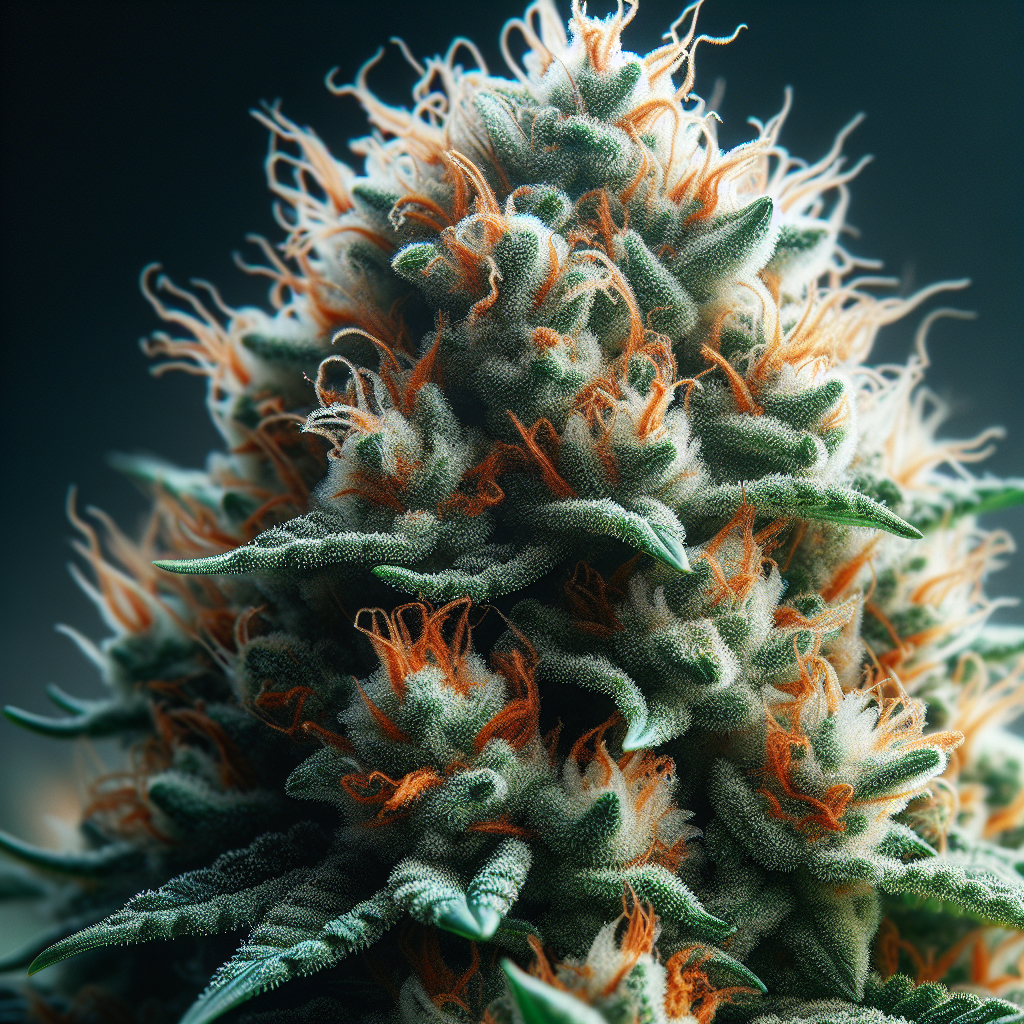The Aromatic Alchemy: How Terpenes Shape Cannabis Effects
Cannabis has been used for centuries, celebrated not only for its psychoactive properties but also for its diverse therapeutic benefits and rich aromatic profile. While many are familiar with cannabinoids like THC and CBD, fewer know about the unsung heroes of the cannabis plant: terpenes. These organic compounds not only influence the aroma and flavor of cannabis but also play a critical role in shaping the overall effects of different strains. In this article, we will explore the world of terpenes, how they interact with cannabinoids, and why understanding them is key to enhancing your cannabis experience.
What Are Terpenes?
Terpenes are aromatic compounds found in many plants and are responsible for their distinctive scents. Present in various species, including fruits, herbs, and flowers, terpenes help plants attract pollinators, deter herbivores, and protect against environmental stressors. Cannabis is particularly rich in terpenes, with over 150 different types identified.
Each terpene offers a unique aromatic profile, contributing to the particular scent and flavor of cannabis strains. Some common terpenes include:
- Myrcene: Earthy, musky aroma, often associated with the calming effects of certain strains.
- Limonene: Citrus-scented, known for its uplifting, mood-enhancing properties.
- Pinene: Pine-scented, often linked to improved focus and alertness.
- Linalool: Floral, lavender-like aroma, associated with relaxation and stress relief.
- Caryophyllene: Spicy, peppery scent, recognized for its potential anti-inflammatory effects.
The Entourage Effect: Terpenes and Cannabinoids
Understanding the role of terpenes in cannabis experiences involves exploring the concept of the "entourage effect." This term describes how cannabinoids and terpenes work synergistically to produce a more profound effect than when either is consumed in isolation.
For example, THC is widely known for its psychoactive effects. However, when combined with certain terpenes, its effects can be modified. Myrcene may enhance THC’s sedative properties, while limonene may elevate mood, even when THC is present. The presence of terpenes can alter not only the strain’s effects but also its therapeutic benefits, making it essential for consumers to choose strains based on both cannabinoid and terpene profiles.
Key Terpenes and Their Effects
1. Myrcene
Profile: Earthy, musky, clove-like aroma.
Effects: Myrcene is one of the most abundant terpenes in cannabis and is believed to influence the sedative effects of certain strains. It is thought to promote relaxation and enhance sleep quality. Many Indica strains have high levels of myrcene, making them popular choices for evening use.
2. Limonene
Profile: Bright, citrus scent.
Effects: Limonene is known for its uplifting effects and is often found in sativa strains. This terpene is linked to mood enhancement and stress relief, making it ideal for social situations or creative endeavors. Beyond its recreational applications, limonene also shows promise as an anti-anxiety agent, providing therapeutic potential for those dealing with mental health challenges.
3. Pinene
Profile: Pine and fresh forest aroma.
Effects: Pinene may enhance focus and alertness, making it an excellent choice for daytime use. Its respiratory benefits could also be valuable for those looking to alleviate asthma symptoms. When combined with THC, pinene may counteract some of THC’s short-term memory impairment, allowing users to enjoy their experience without the foggy feeling often associated with high-THC strains.
4. Linalool
Profile: Floral, lavender scent.
Effects: Linalool is well-known for its calming properties. This terpene may promote relaxation and reduce anxiety, making it a popular choice for those seeking stress relief or help with sleep. Its presence in cannabis can add to the overall soothing experience of the strain, making it ideal for evening or nighttime use.
5. Caryophyllene
Profile: Spicy, peppery aroma.
Effects: Caryophyllene is unique in that it can interact with the body’s cannabinoid receptors, potentially offering anti-inflammatory and pain-relieving benefits. This makes it useful for medical cannabis patients dealing with chronic pain or inflammation. Its spicy profile adds depth to various strains, contributing to their overall aroma and flavor.
Terpene Profiles by Cannabis Strain
Understanding the specific terpene profiles of different cannabis strains can help consumers make informed choices that align with their desired effects. Here are some popular strains and their terpene contents:
1. Girl Scout Cookies (GSC)
- Dominant Terpenes: Caryophyllene, Limonene, Myrcene
- Effects: Balanced euphoria with relaxing undertones, making it suitable for both day and night.
2. OG Kush
- Dominant Terpenes: Myrcene, Limonene, Terpinolene
- Effects: Relaxation combined with a euphoric high, perfect for unwinding after a long day.
3. Sour Diesel
- Dominant Terpenes: Limonene, Caryophyllene, Myrcene
- Effects: Energizing, cerebral high that enhances focus and creativity.
4. Blue Dream
- Dominant Terpenes: Myrcene, Pinene, Caryophyllene
- Effects: Balanced effects provide both euphoria and relaxation, ideal for daytime use.
5. Lavender
- Dominant Terpenes: Linalool, Myrcene, Terpinolene
- Effects: Deep relaxation and stress relief, perfect for nighttime use.
By examining these profiles, consumers can select strains that better align with their personal needs and preferences.
The Future of Terpene Research
As cannabis acceptance widens and more studies highlight the benefits of these compounds, the future of terpene research looks promising. Ongoing investigations aim to better understand how terpenes affect human health, their potential therapeutic applications, and their interactions with cannabinoids.
Advancements in extraction methods may also improve access to terpene-rich products. Terpene-infused products, such as extracts, edibles, and vape oils, are becoming increasingly popular, allowing consumers to customize their experiences by choosing specific terpenes that align with their desired effects.
How to Choose Cannabis Based on Terpene Profiles
With a growing understanding of terpenes and their effects, consumers can make more informed decisions when selecting cannabis strains. Here are a few tips to help you navigate terpene-based choices:
-
Understand Your Needs: Identify your desired effects. Are you looking for relaxation, focus, or pain relief? Knowing what you want can help you select strains with the appropriate terpenes.
-
Check the Lab Reports: Reputable dispensaries provide lab testing results that include cannabinoid and terpene profiles. These reports can be a valuable resource in selecting the right strain.
-
Engage with Budtenders: Don’t hesitate to ask knowledgeable budtenders about the terpene profiles of specific strains. They can offer recommendations based on your preferences.
- Experiment: Everyone’s body reacts differently to cannabis. Trying various strains and keeping a journal of your experiences can help you fine-tune your selections over time.
Conclusion
The fascinating world of terpenes adds an intricate layer to the cannabis experience, enriching our understanding of how this plant works. Terpenes are critical players in the entourage effect, influencing both the aroma and therapeutic properties of cannabis. By exploring different terpenes and their effects, consumers can tailor their experiences to meet their needs, whether for relaxation, creativity, or therapeutic relief. As research advances and more consumers become aware of the importance of terpenes, the appreciation for these aromatic compounds continues to grow, promising an exciting future for the cannabis community.
FAQ Roundup
1. What are terpenes in cannabis?
Terpenes are aromatic compounds responsible for the distinct scents and flavors of cannabis strains. They also play a significant role in influencing the effects experienced by users.
2. How do terpenes affect cannabis effects?
Terpenes interact with cannabinoids to produce what’s known as the entourage effect, which can enhance or modify the effects of cannabinoids like THC and CBD. Different terpenes can promote relaxation, focus, uplifted mood, or pain relief.
3. What are the most common terpenes found in cannabis?
Some of the most common terpenes include myrcene, limonene, pinene, linalool, and caryophyllene, each contributing unique effects and aromas.
4. How can I choose the right cannabis strain for my needs?
Consider your desired effects, check the strain’s terpene profiles through lab reports, and engage with knowledgeable budtenders for recommendations. Experimenting with different strains can also aid in discovering what works best for you.
5. Are terpenes safe?
Yes, terpenes are generally considered safe for consumption, especially when derived from natural sources. As with any compound, individual reactions may vary, so it’s advisable to start with small amounts.
6. Can I extract terpenes from cannabis?
Yes, terpenes can be extracted from cannabis using various methods, including steam distillation and CO2 extraction, allowing for the creation of terpene-rich oils that can be used in various cannabis products.
In summary, terpenes are not just aromatic compounds; they are integral to the overall experience and efficacy of cannabis. As you explore strains, consider the unique benefits each terpene offers to maximize your cannabis journey.





